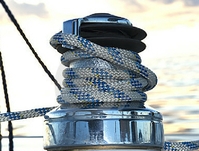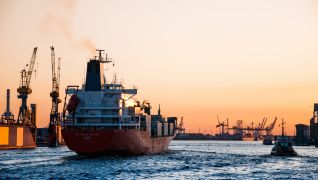Bearings for marine engineering
From offshore renewables, naval and maritime security to commercial and leisure sectors, the marine market is a vast and varied landscape, playing an important role in the global economy. However, severe weather and harsh ocean conditions, coupled with increasingly stringent environmental and safety regulations, makes the marine engineering industry a challenging environment for manufacturers.

One such environmental challenge is the ever-present risk of corrosion, affecting even the smallest of mechanical components, such as bearings. Due to the corrosive power of sea water, a compromise between load capacity and corrosion resistance is required to maximise the lifespan of marine bearings. But which material should you choose?
Corrosion resistant bearing materials
Stainless steel bearings, more specifically 440 grade stainless steel bearings, are commonly used in marine environments and are an obvious choice for corrosion resistance. However, they do have a limited resistance to seawater or salt spray.
To increase corrosion resistance properties, 440 grade stainless steel ball bearings can also be passivated. Passivation is a metal finishing process using nitric acid or citric acid to remove free iron from the surface. The chemical treatment leads to a protective oxide layer that is less likely to chemically react with air and cause corrosion. This will however eventually corrode in a marine environment unless protected from the elements.
We also stock ball bearings manufactured from 316 grade stainless steel bearings which is also known as marine grade stainless steel due to its ability to be used in marine applications above the water line or in flowing water.
As this steel cannot be thermally hardened, 316 grade stainless steel bearings have much lower load and speed ratings. The load and speed ratings of 316 stainless steel ball bearings are significantly less than the equivalent 440 grade bearings.
Bearings made from 316 grade stainless steel can be used at high temperatures provided a suitable cage material is used or the bearings are full complement. 316 grade stainless steel cannot be hardened by heat treatment and will only support low loads and low speeds.
An alternative material for marine environments is ceramic. Full ceramic bearings, made from zirconia or silicon nitride with PEEK cages and seals, offer superior corrosion resistance in marine applications. Ceramic bearings are not affected by seawater so they can be used in marine environments where they are permanently submerged and can cope with higher loads.
So, what’s the drawback? Full ceramic bearings are much more expensive than steel bearings, so are normally only used in environments that are too hostile for steel bearings. As ceramics are much harder than steel, they are more brittle. Steel can tolerate large impacts through plastic deformation, whereas ceramics are more likely to crack. For this reason, full ceramic bearings are not recommended where heavy shock loads are likely.
Finally, acetal resin bearings with 316 stainless steel or glass balls have very good resistance to seawater but again, can only be used in lower precision low load and low speed applications. The capacity of plastic bearings can be increased by using an alternative material such as PEEK but these are still classified as semi-precision, low load bearings.
If you’re looking to source marine grade bearings for a specialist engineering project, contact the SMB Bearings team directly. We are always happy to offer advice to suit your specific application.
Alternatively, follow the link to download our catalogue and guide to bearings for harsh environments.



